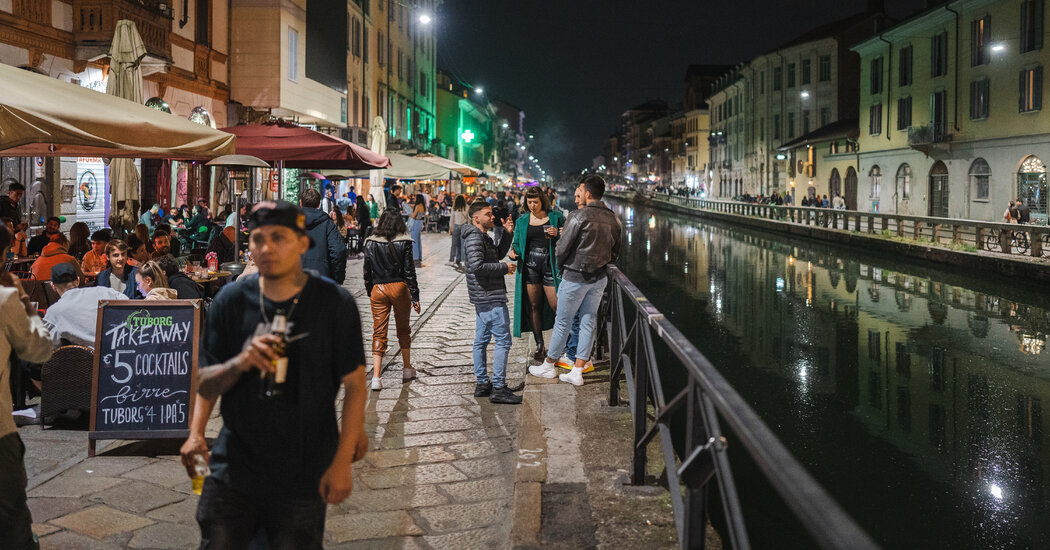Packed bars with carousing revelers spilling onto clogged streets. Takeaway booze swigged by drunken tourists and students. Earsplitting volumes in once quiet residential neighborhoods long after midnight.
When Milan’s authorities embarked years ago on plans to promote the city as a buzzy destination by building on its reputation as Italy’s hip fashion and design capital, the resulting noise and rowdy overcrowding were perhaps not quite what they had in mind.
Now, after years of complaints and a series of lawsuits, the city has passed an ordinance to strictly limit the sale of takeaway food and beverages after midnight — and not much later on weekends — in “movida” areas, a Spanish term that Italians have adopted to describe outdoor nightlife. It will go into effect next week and be in force until Nov. 11.
Outdoor seating for restaurants and bars will also end at 12:30 a.m. on weekdays, and an hour later on weekends, so that people who want to party longer will have to do so indoors.
The businesses that have profited from Milan’s success in promoting itself as a happening city are grumbling.
One trade association complained that the ordinance was so strict that Italians would no longer be able to take a late-night stroll with a gelato in hand.
Marco Granelli, the Milan council member who is responsible for public security, said those fears were overblown. Eating gelato on the fly would not be a problem, he said.
The ordinance, he said, was aimed at dealing with “behavior that impacts on residential neighborhoods” and with takeaway alcoholic drinks, which are seen as the main reason late-night revelers linger on certain streets and squares. “It’s clear that ice cream, pizza or brioches don’t create overcrowding,” he said.
Marco Barbieri, secretary general for the Milan branch of the Italian retailers’ association Confcommercio, said his group would fight the ordinance, which he estimated would affect about 30 percent of the city’s 10,000 restaurants and bars. The new rules, he said, would penalize retailers for the bad behavior of their customers.
But residents have been complaining about Milan nightlife for a while.
“It’s a nightmare,” said Gabriella Valassina of the Navigli Committee, one of several citizen’s groups formed to address the increasing numbers of people — and decibel levels — in Milan’s historic neighborhoods.
She outlined a list of complaints: noise pollution (peaks of 87 decibels, well over the allowed…
Click Here to Read the Full Original Article at NYT > Travel…
